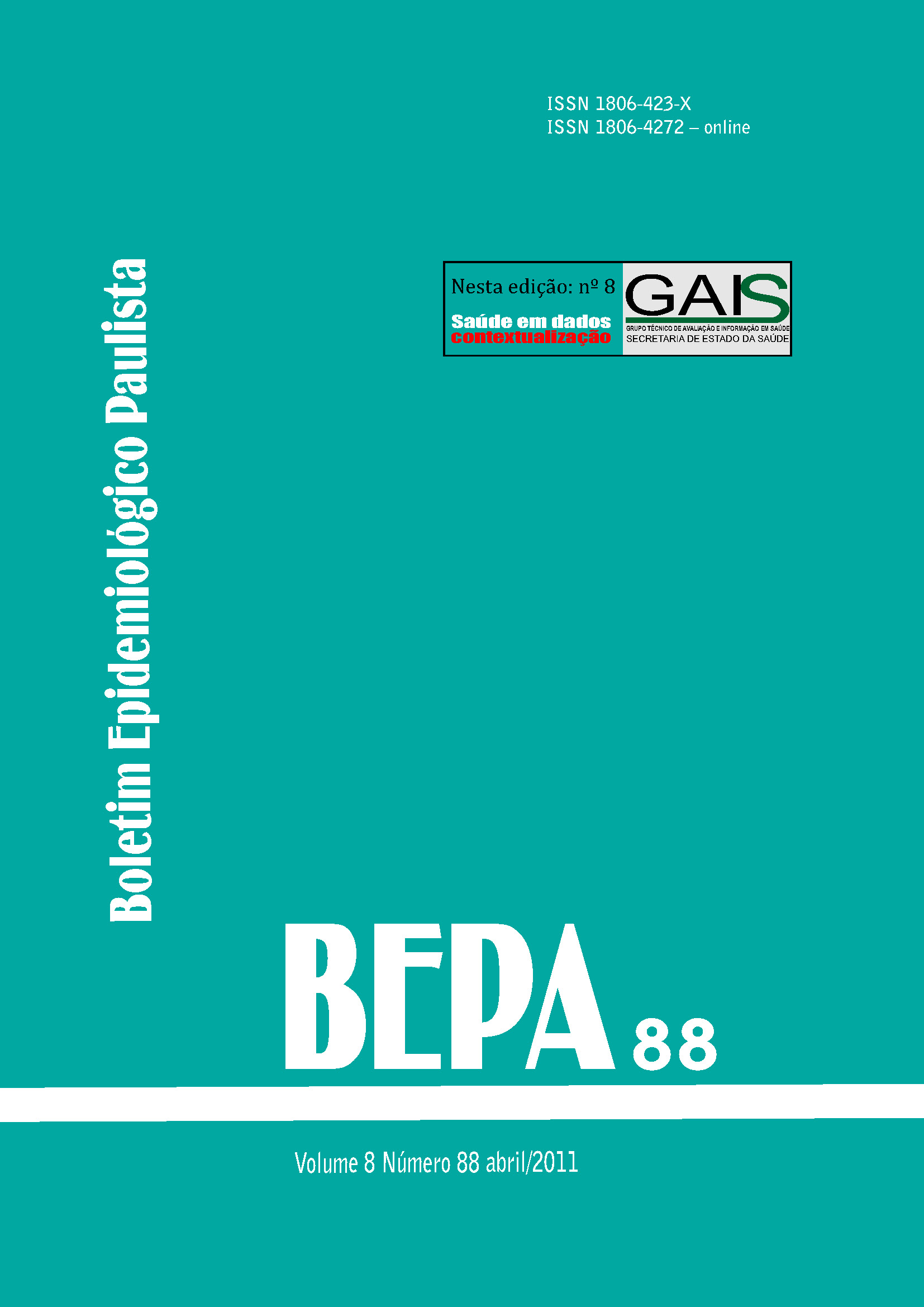Abstract
Aiming to describe the occurrence of american visceral leishmaniasis in the region of Sao Jose do Rio Preto proposed the current study. Upon notification of a suspected case AVL triggers an active search for human cases in the area for municipal surveillance. The Sucen conducts entomological research collection with manual aspiration and the municipality makes the search for dogs by canine survey. The transmission in the region begins in 2008, with the record of 03 human cases in the city of Jales. The entomological investigation indicated the presence of Lutzomyia longipalpis and research focus of the meeting was positive dogs. In the same year, the municipality of Urania confirmed the presence dog positive for AVL and the vector. In 2009, it was reported the first human case in the city of Urania. Concurrently, the city of Santa Fe South reported 03 positive dogs were also noting the presence of L. longipalpis in this city and in Palmeira D'Oeste, Santana da Ponte Pensa, Santa Salete and Votuporanga. In 2010, the city of Aspasia and Marinópolis the occurrence of the vector. Given the above situation for the AVL in the region should worsen. Municipal governments must work together with the surveillance and control strategies to minimize the occurrence of the disease on the population, the intensification of environmental management by creating situations not conducive to the proliferation of vectors.
References
TLainson R, Shaw JJ. Evolution, classification and geographical distribution. In: Peters W, Killick-Kendrick R. The Leishmaniasis in biology and medicine. London: Academic Press Inc; 1987.
Organização Pan-Americana da Saúde - Opas. Consulta de Expertos OPS/OMS sobre leishmaniasis visceral en Las Américas [informe na internet]. Brasília: Opas/Ministério da Saúde; 2009 [acesso em 7 jul 2010]. Disponível em: http:// www.panaftosa.org.br/Comp/Zoonoses/ Leishma/doc/Inf_final_leish_2005.pdf.
Alves WA. Leishmaniose visceral americana: situação atual no Brasil. Bepa [boletim na internet]. 2009; 6(71):25-9. Disponível em:http:// www.cve.saude.sp.gov.br/agencia/ bepa71_lva.htm
Secretaria de Estado da Saúde de São Paulo, Superintendência de Controle de Endemias - Sucen e Coordenadoria de Controle de Doenças - CCD. Manual de Vigilância e Controle da Leishmaniose Visceral Americana do Estado de São Paulo. São Paulo, 2006.
Bejarano EE, Uribe S, Rojas W, Velez ID. Phlebotomine sand flies (Díptera: Psychodidae) associated with the appearance of urban leishmaniasis in the city of Sincelejo, Colômbia. Mem Inst Oswaldo Cruz.2002;97:645-7.
Marzochi MCA, Marzochi KBF. Tegumentary and visceral leishmaniases in Brazil – Emerging anthropozoonosis and possibilities for their control. Cad Saúde Pública. 2004;10:359-75.
Gontijo CMF. Leishmaniose visceral no Brasil: quadro atual, desafios e perspectivas. Rev Bras Epidemiol. 2004;7(3):338-49.
Margonari C, Freitas CR, Ribeiro RC, Moura ACM, Timbó M, Gripp AH, Pessanha JE, Dias ES. Epidemiology of visceral leishmaniasis through spatial analysis, in Belo Horizonte municipality, state of Minas Gerais, Brazil. Mem Inst Oswaldo Cruz. 2006;101:31-8.
Lainson R, Rangel EF. Lutzomyia longipalpis and the eco-epidemiology of american visceral leishmaniasis, with particular reference to Brazil: a review. Mem Inst Oswaldo Cruz. 2005;100:811-27.
D'Andréa LAZ. Leishmaniose visceral americana – Análise das estratégias de controle da doença na micro-região de Dracena na Alta Paulista/SP-Brasil. [Dissertação]. São Paulo. Universidade do Oeste Paulista. 2008.
Neves VLFC, Katz G, Rodas LAC, Poletto DW, Lage LC, Spínola RMF, Cruz OG. Utilização de ferramentas de análise espacial na vigilância epidemiológica de leishmaniose visceral americana- Araçatuba, São Paulo, Brasil, 1998-1999. Cad Saúde Pública. 2001;17(5):1263-7.
Neves VLFC. Leishmaniose visceral americana: doença emergente no estado de São Paulo. [acesso em 1 jul 2010]. Disponível em: http://www.comciencia.br/ reportagens/2005/06/17.shtml.
Sistema Estadual de Análise de Dados - Seade. Região Administrativa de São José do Rio Preto [acesso em 7 jul 2010]. Disponível em: http://www.seade.gov.br/ produtos/iprs/analises/RASJRiopreto.pdf.
Ministério da Saúde. Manual de vigilância e controle da leishmaniose visceral. Departamento de Vigilância Epidemiológica. Secretaria de Vigilância em Saúde, Ministério da Saúde. Brasília, 2003.
Shaw JJ. The relationship of sand fly ecology to the transmission of leishmaniasis in South America with particular reference to Brazil. In: Burger J. Contributions to the knowledge of Diptera. Vol. 14. Gainsville, Florida: Associated Publishers; 1999. p. 503.
Silva EA, Andreotti R, Honer MR. Comportamento de Lutzomyia longipalpis, vetor principal da leishmaniose visceral americana, em Campo Grande, Estado do Mato Grosso do Sul. Rev Soc Bras Med Trop. 2007;40(4):420-5.
Bailey TC. Spatial statistical methods in health. Cad Saúde Pública. 2001;17:1083-98.

This work is licensed under a Creative Commons Attribution 4.0 International License.
Copyright (c) 2011 Sirle Abdo Salloum Scandar, Rubens Antonio da Silva, Rubens Pinto Cardoso-Júnior, Frank Hulder Oliveira
